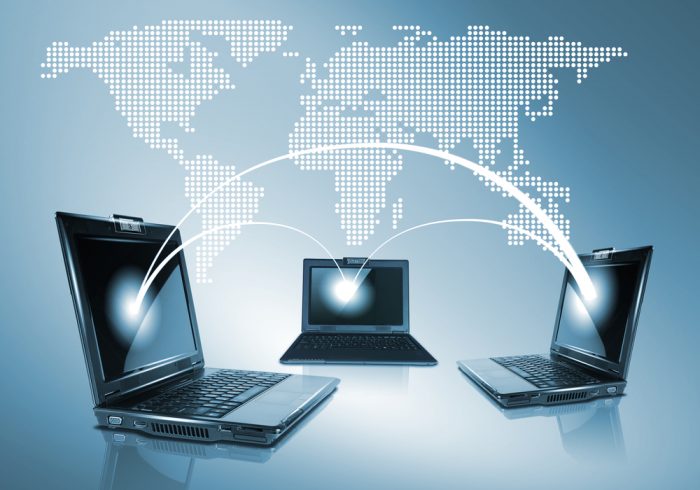If you work from home, you know more than the general public that technology is drastically changing the way in which we work. Organizations no longer have to have all of their employees in one physical place. Small businesses are now able to use science and math to determine what their customers want, when in the past they did this mostly on a hunch. Technology is making it easier than ever to communicate with our coworkers, business partners, vendors and customers. Those businesses who use these technologies to their advantage are the businesses that will succeed now and in the future. Here are six ways technology is changing the way in which we work.

We are more connected than ever
If you work from home, you realize this more than the average person. You probably use your computer to interact with people all throughout your area, state, country and even internationally in order to make your business work. In many ways this is for the better, but in a few ways it keeps us attached to our work when we truly need a break. Because of technology, communicating has gotten more frequent and more efficient than ever before. That does not necessarily mean people are better communicators, but just that the avenue to communicate is becoming much more available.
Collaboration
In situations where persons might not be physically in an office setting, technology is offering a number of options for work teams to collaborate remotely. These interactions can be in real-time or non-real time interaction. Trainings are a great time to use non-real time recordings, especially for large corporations with employees spread all across the country. Real-time interactions can benefit sales people who work with customers across the country. This can help in situations where salesman is trying to sell computer software in New York or workers compensation insurance in Georgia.

Personalized Customer experience is growing at a rapid pace.
Personal relevant shopping experiences are not new to the 21st century. In the past customers wanted to receive individualized attention, but in today’s digital environment personalization is becoming more of an expectation in the shopping experience. We have seen this kind of personalization in our everyday lives for years when we have to keep a card on our keychain in order to get the specialty price at the grocery store or when we use our store specific credit card at a major department store. Now these experiences are becoming more and more personalized with online logins. Many companies have allowed customers to create wish-lists, baby registries and wedding registries all from the comforts of their living room. Some companies are trying to integrate this in to every aspect of our life by offering television, books, retail products and even groceries all with your unique log in that they can use to offer products specific to you and your purchasing habits.
We know more about our customers than ever before.
Just a few decades ago we knew our customers because they lived in our community. Their children went to school and played sports with our children. As technology has advanced, it has opened up entire new markets to an infinite amount of people and businesses. You could say it has taken a step to even the playing field between big and small business. Nowhere is this more evident than when it comes to analytics. In the past business owners thought they knew who their customers were and what they wanted, but truly this was all a hunch. Now we can use science and math to determine if those hunches were accurate and how we can harness them to the ultimate benefit of our customers. This can be true for businesses that are looking to provide landscaping services to a local home owners association or workers compensation insurance for a local restaurant.

Consumers are beginning to like the convenience of faster delivery and lower prices.
Because more retailers are entering more aspects of our life, it is creating competition between retailers that we have not seen since the industrial revolution. Because of the prevalence of mobile technology, customers can shop from just about any business from where ever they are. Bigger businesses are able to offer ever faster product delivery and smaller local businesses are forced to keep up with the new expectations customers have from the businesses they interact with. Consumers benefit from these technological advances in the form of better service, more options and faster delivery of products and services.
Social media is here to stay.
Many small business owners know they have to have a presence online, but most are not sure what that presence should be and how many resources they should commit to it in order to get the best return on investment. One thing is for sure is that social media is now an intricate part of our lives and it is going to be for the foreseeable future. Depending upon the industry you operate in you probably need to have a website and a couple of social media profiles. It is especially important to commit to this if you are a business that operates in a boring industry.
How many profiles you create and which sites you participate in, is dependent upon your goals and the habits of your target audience. Facebook and Twitter are a good place to start and have a presence, but no matter which site you plan to use you need to commit to some type of a schedule. That schedule may be once a week, once a month, once a day. No matter what schedule you come up with, you need to stick to it. In order to see returns from social media you need to be patient and you need to be regular in both your posts and your interactions with other profiles.
Find a Home-Based Business to Start-Up >>> Hundreds of Business Listings.













































